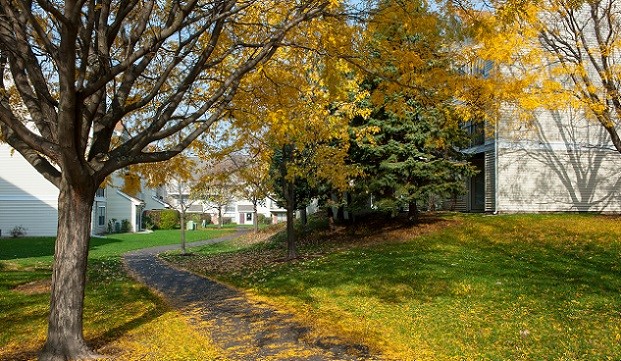 Fox Valley Villages in Aurora, IL, just sold for $53.75 million, and the new owner looks at it as a value-add opportunity.
Fox Valley Villages in Aurora, IL, just sold for $53.75 million, and the new owner looks at it as a value-add opportunity.
CHICAGO—As reported last week in GlobeSt.com, the Chicago region’s apartment construction boom should continue in the short-term, with rents rising at a healthy rate in 2017, even as developers add another 8,400 units, roughly the same as in 2016. At the same time, lenders have started to become more conservative, at least when it comes to financing new construction, leading some to believe the sector will soon hit a pause. But that pause will probably not seriously dampen the enthusiasm among investors for apartment properties in the metro region.
“There are a lot of reasons to be optimistic about transactional velocity,” Steve Rachman, regional manager/managing broker of Marcus & Millichap’s Chicago O’Hare office, tells GlobeSt.com. “A lot of money is still sitting on the sidelines,” and with healthy rent growth forecast for 2017, investors should be willing to place a lot of bets on the apartment sector, even if it means having to settle for compressed yields.
The average effective rent will climb 4.5% to $1,442 per month in 2017, building on a 5.4% increase registered last year, according to the latest forecast from Marcus & Millichap.
“We’re seeing multiple bids on everything we list,” he adds. Rachman’s office specializes in class C properties, and that portion of the market is one place private investors can go to secure greater cash flow. Properties in the city may come with a cap rate of around 4%, but many in solidly performing suburban areas such as Oak Lawn, Glen Ellyn or River Forest are in the range of 6% and even close to 7%.
And the delivery of high-end properties in the metro’s marquee neighborhoods, especially on the North Lakefront, will present buying opportunities for institutional investors, according to Marcus & Millichap.
Still, even though 2016 was a record year for investment in the apartment sector, “the intense demand in the past few years lifted the average price well beyond the prior cycle’s peak and buyers have begun to show resistance to elevated pricing as sellers’ expectations rise,” says Marcus & Millichap. “A further widening of buyer and seller pricing expectations may moderate the rise in valuations and slow deal flow. Additional risk factors facing the market include perennial concerns about the city and state budget, which could potentially create some uncertainty in tax policy.”

















 Copyright © 2024 ALM Global, LLC. All Rights Reserved.
Copyright © 2024 ALM Global, LLC. All Rights Reserved.